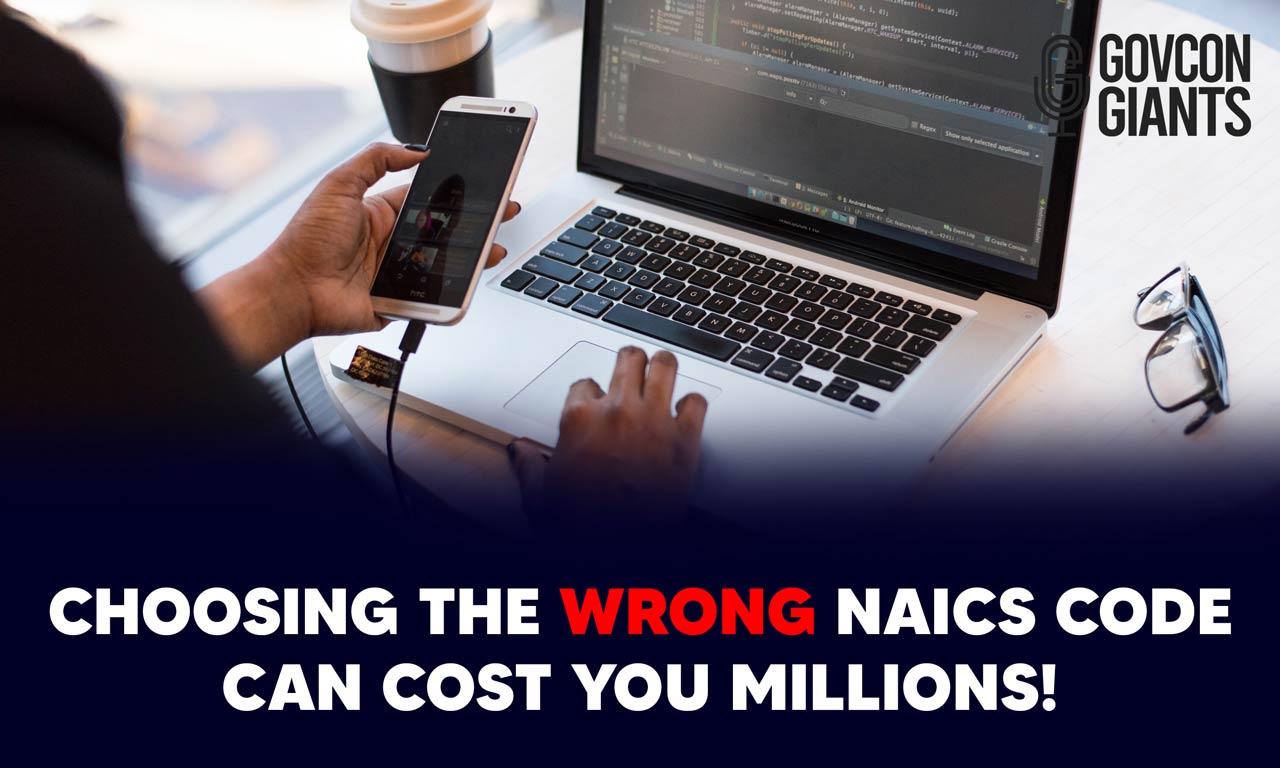What is a NAICS code and why do you need one? Even further, let’s answer the question on why choosing the wrong NAICS code can cost you millions! Read this article to learn more.
WHAT IS A NAICS CODE?
A NAICS code is a six digit code used by federal agencies to determine the products and services that they want to buy. It is also used by small businesses to identify products and services that they want to sell to the government.
You can view the NAICS code list from the U.S. Census Bureau or by contacting the bureau through 1-888-756-2427 or on their email address, [email protected]. You can also visit NAICS.com.
Now, you need these codes when you get ready to register in the System for Awards Management database and when you apply for some of the small business programs.
With this, you need to make sure that your NAICS code is appropriate for your business.
For instance, if you’re under the construction industry, you need to look for the appropriate keyword for your products and services. You may not be providing sanding services, but you can be under the New Single Family Housing Construction section. The key is to be specific on what you provide.
Most importantly, consider that you can have multiple codes, depending on the products and services that you provide. Check this video entitled “Primary vs Secondary NAICS Code” that we have on our YouTube channel.
WHAT IS A SIZE STANDARDS TABLE?
Now, why is choosing the right NAICS Code important? Let’s answer this question by pulling the Small Business Administration’s Size Standards Table.
So, this table determines your eligibility to be a small business and this corresponds to the NAICS codes that you use.
This standard is also divided into two categories: manufacturing which is determined by your number of employees and contract work which is determined by millions of dollars.
So, how does this break down? If you are under the contract work category, you will be provided with annual gross receipts over a three year span that you should not exceed. Same thing with the manufacturer category where your employees cannot exceed 500 employee average over a three year span. Still, consider that the number depends on your NAICS code.
WHY SHOULD YOU CHOOSE THE RIGHT NAICS CODE?
So, why do you need to check the Size Standards Table in choosing your NAICS code?
Well, let’s say, you are under the NAICS code 238320 which is for Painting and Wall Covering Contractors and your secondary NAICS code is 236015 which is for the New Single Family Housing Construction.
This means that your cap to be eligible as a small business is $15 million a year over three years or a total of $45 million in the three year span. Once you exceed that number, you are no longer eligible to be a small business.
However, you can change your primary NAICS code whatever you like.
In the case above, you can change the primary code to be 236015 and the 238320 is the secondary one. This way, your cap would be $36.5 million per year on average which over three years would be a total of $110 million dollars. That’s a difference of $60 million dollars!
RESOURCES
So, that is why choosing the right NAICS Code for your business is so important prior to your registration because once you choose the wrong one, you might really lose a potential millions of dollars in revenue.
With this in mind, if you want to learn more on how to navigate the federal marketplace as a small business without losing millions of dollars, then check the resources below.
You can also join us here at GovCon Giants or check the new GovCon Edu where you learn everything about government contracting!
Choosing the wrong NAICS code can cost you millions!
Primary vs Secondary NAICS Code

